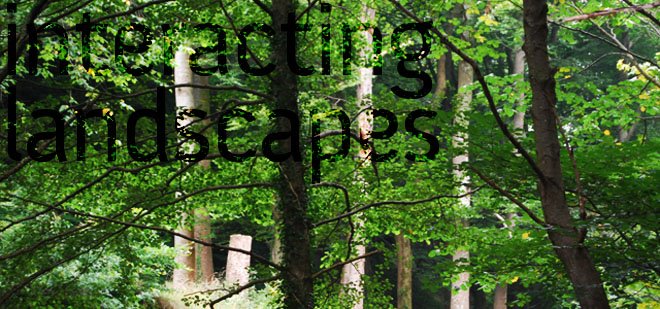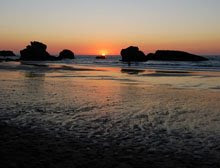This is the the last and third year on the BA course and I wanted to try to explore new ways of presenting my work. The project that we are currently working on is all about how the landscape changes through the cycles of growing. Based on a crop that grows on a cycle of 3 years instead of a usual agricultural circle of 1 year.
I am using the cycles of the crop to design the landscape. This is my first attempt on an animation to show this. Thought it was important to show the change in the landscape that the concept is built on and that a productive landscape can bring a an interesting and playfulness to a space.
I will now try to get it a bit interesting and show a larger part of the site and maybe try to get the leaves and the 3d dimensions of the space a bit more.
Tuesday, November 11
Thursday, November 6
Kew Garden
 Went to Kew Gardens on a great autumns day. Never been during the autumn before and it was quite different. Also the opportunity to go up the tree top walkway. It was very cool, but actually when you were there my first impression was that it was quite short. I thought that it would have been a lot longer (even though I realise that it would have been quite impractical, expensive and too disturbing for surrounding trees roots).
Went to Kew Gardens on a great autumns day. Never been during the autumn before and it was quite different. Also the opportunity to go up the tree top walkway. It was very cool, but actually when you were there my first impression was that it was quite short. I thought that it would have been a lot longer (even though I realise that it would have been quite impractical, expensive and too disturbing for surrounding trees roots).It is still very successful. The different feeling you get when you are up there and I like the fact that the walkway is not very wide - which makes you feel apart of the surroundings a lot more. The material use is great as well. It is very rustic and I love the soft mesh on the railings. The rusty colour compliments the autumn colours on the trees great.
Marks Barfield Architects are the architects behind it. The design is based on the Fibonacci sequence- which is simple mathematical sequence that lies at the heart of the growth of many plant structures. The ratio provides a perfectly proportioned growth pattern. This sequence is used for the spacing of the connection points for the diagonals of the walkway trusses. The legs are based on a simple historical tree. I think as a designer it is fun to read and see where other designs that you see come from. Sometimes the idea is good and it is looks good - but like in this case I think that the idea doesn't really come across in the design.
When reading on Kew Gardens website it says that the walkway: "gives visitors the opportunity to journey from the fascinating root system, learning about a tree's life underground, to the top of the tree canopy to explore biodiversity from above." I think a lot more could have been done to let us investigate the roots of the trees.
When walking round the gardens I realise the importance of trees and deciduous plants and a more naturalistic landscape. It is great to see so many different colours and bare trees as well. A lot of urban and designed landscaped have a lot of evergreen low maintenance planting. In the introduction of the 'Dynamic Landscape' by James Hitchmough and Nigel Dunnett they talk about ' blocks of evergreen shrubs, mechanically cut on a regular basis to maintain an artificial geometric shape'.
I usually go for a lot of evergreen species when I incorporate planting in my designs and I think I can be a bit more brave and get more interesting and good designs. Using a more a ecological process for plants to grow together and let the site be developed by the process.
Labels:
Focus week Nov,
Inspiration,
Parks
Integrated River Basin Managment
- managing land and water in integrated way
There is currently a free lecture series on at Birkbeck University hosted by the Ecology and Conservation Studies Society.
As the title of the lecture says there is a close relationship between land and water and there is a lot of pressure on both of these and their environments today.
The lecture was held by Pam Gilder from the Environment Agency. She introduced the new Water Framework Directive that has been created to held the water bodies of the UK to improve.
The lecture was quite technical but still interesting. For me as a Landscape Architecture student I am very interested in improving my knowledge about the natural environment both in rural and urban areas. This to help me to combine and introduce natural processes in design and to see people interact with them.
The main thing talked about in the lecture was the importance that land use has on the adjacent water bodies and how we can create a good relationship between landuse and water. And of course the importance that management has in this. What can be positive landuse management solutions?
20% of UK's rivers are today in good ecological status according to the new document. Some of the main issues are:
- Nutrients
- Ammonia
- Abstraction (irrigation)
- Chemicals
- Morphological change
- Alien species
- Sediments
All of these are related to landuse.
Some of the big scale solutions to these are: paid landuse change, advice, farm assurance, licenses and registrations, water protection zones, NVZ areas.
The future shortage of water was also talked about. How we are going to have periods of very heavy rainfall and then periods of very dry weather and how these will not balance. How we in the UK have a very high use / capita of water. How we have maniputaled our water bodies a lot. The problem with water resevoirs - which stops water going into the groundwater. What are the solutions to this?
The answer to that is obviously not easy and at the moment I think we need to start by just consider these facts in our everyday life as well as in our designs.
On our current project I am trying to propose something that might have a positive effect - even on just a small scale.
There is currently a free lecture series on at Birkbeck University hosted by the Ecology and Conservation Studies Society.
As the title of the lecture says there is a close relationship between land and water and there is a lot of pressure on both of these and their environments today.
The lecture was held by Pam Gilder from the Environment Agency. She introduced the new Water Framework Directive that has been created to held the water bodies of the UK to improve.
The lecture was quite technical but still interesting. For me as a Landscape Architecture student I am very interested in improving my knowledge about the natural environment both in rural and urban areas. This to help me to combine and introduce natural processes in design and to see people interact with them.
The main thing talked about in the lecture was the importance that land use has on the adjacent water bodies and how we can create a good relationship between landuse and water. And of course the importance that management has in this. What can be positive landuse management solutions?
20% of UK's rivers are today in good ecological status according to the new document. Some of the main issues are:
- Nutrients
- Ammonia
- Abstraction (irrigation)
- Chemicals
- Morphological change
- Alien species
- Sediments
All of these are related to landuse.
Some of the big scale solutions to these are: paid landuse change, advice, farm assurance, licenses and registrations, water protection zones, NVZ areas.
The future shortage of water was also talked about. How we are going to have periods of very heavy rainfall and then periods of very dry weather and how these will not balance. How we in the UK have a very high use / capita of water. How we have maniputaled our water bodies a lot. The problem with water resevoirs - which stops water going into the groundwater. What are the solutions to this?
The answer to that is obviously not easy and at the moment I think we need to start by just consider these facts in our everyday life as well as in our designs.
On our current project I am trying to propose something that might have a positive effect - even on just a small scale.
Labels:
Focus week Nov,
Lecture,
Projects
Subscribe to:
Posts (Atom)

















